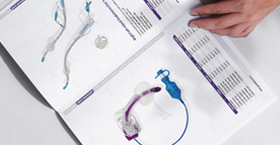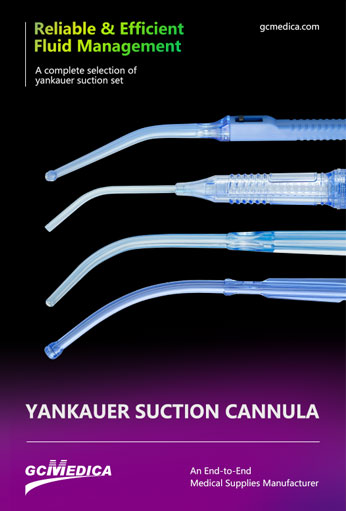Yankauer and Andrews suction tubes are both fundamental instruments in surgical and procedural settings, yet they serve distinct roles based on their design characteristics. The Yankauer tip features a rigid, straight or slightly curved stainless-steel or plastic shaft ending in a smooth, rounded “bulb” tip. This design minimizes tissue trauma while allowing high-volume evacuation of blood, secretions, and small debris. An optional thumb port on the handle gives the operator rapid control over suction strength. Yankauers (commonly 18–22 Fr in size) are the workhorses of general surgery, emergency airway clearance, and oropharyngeal suctioning, prized for their robustness and ease of sterilization .
| Yankauer suction> |
By contrast, the Andrews (or Morse-Andrews) suction tube is a more specialized instrument. It consists of a slender tube—typically 3 mm in outer diameter—terminating in a slightly enlarged tip (around 6 mm) that incorporates one distal opening and four equally spaced side fenestrations. This configuration helps prevent clogging and allows gentle removal of fluids from deep or narrow surgical sites. The Andrews tube often features a subtle distal curvature and an ebonized or ergonomically grooved handle for precise manipulation in neurosurgical, ENT, or microsurgical procedures.
Below is a comparative summary:
| Feature | Yankauer Suction Tip | Andrews (Morse-Andrews) Suction Tube |
|---|---|---|
| Shaft Material | Stainless steel or disposable plastic | Stainless steel |
| Outer Diameter | 6.0 mm (18 Fr) to 7.3 mm (22 Fr) | ~3.0 mm |
| Tip Design | Rounded bulb tip; single distal opening | Tapered tip; one distal + four side openings for anti-clogging |
| Length | 27–31 cm | ~26 cm (10¼ in) |
| Shape | Straight or slight curve | Gentle distal curvature |
| Suction Control | Thumb-controlled vent option | No vent; relies on console control |
| Typical Flow Rate | High-volume evacuation | Low-to-moderate for delicate clearance |
| Common Uses | General surgery, emergency airway/oropharyngeal suction | Neurosurgery, ENT, microsurgery, delicate fluid removal |
| Advantages | Robust, high capacity, versatile | Minimizes clogging, precise, atraumatic |
| Limitations | Can be too large for narrow/deep cavities | Lower suction flow, may require more time for large-volume clearance |
In selecting between these two instruments, clinicians should consider the volume and location of fluid to be evacuated, the need for suction control, and the delicacy of surrounding tissues. For broad, rapid aspiration of blood or secretions, the Yankauer’s high flow and ergonomic thumb port make it ideal. Conversely, when working in tight or sensitive anatomic areas—such as intracranial or middle-ear spaces—the Andrews tube’s slender profile and side-fenestrated tip reduce the risk of tissue trauma and clogging, ensuring smoother, more controlled suctioning. Proper sterilization practices and adherence to single-use policies (for disposable variants) remain essential for patient safety and optimal outcomes.
Related Products
- Super-Smooth Distal Yankauer
- MegaFlow Suction Handles and Sets


 Français
Français Español
Español Products
Products

 About Us
About Us












